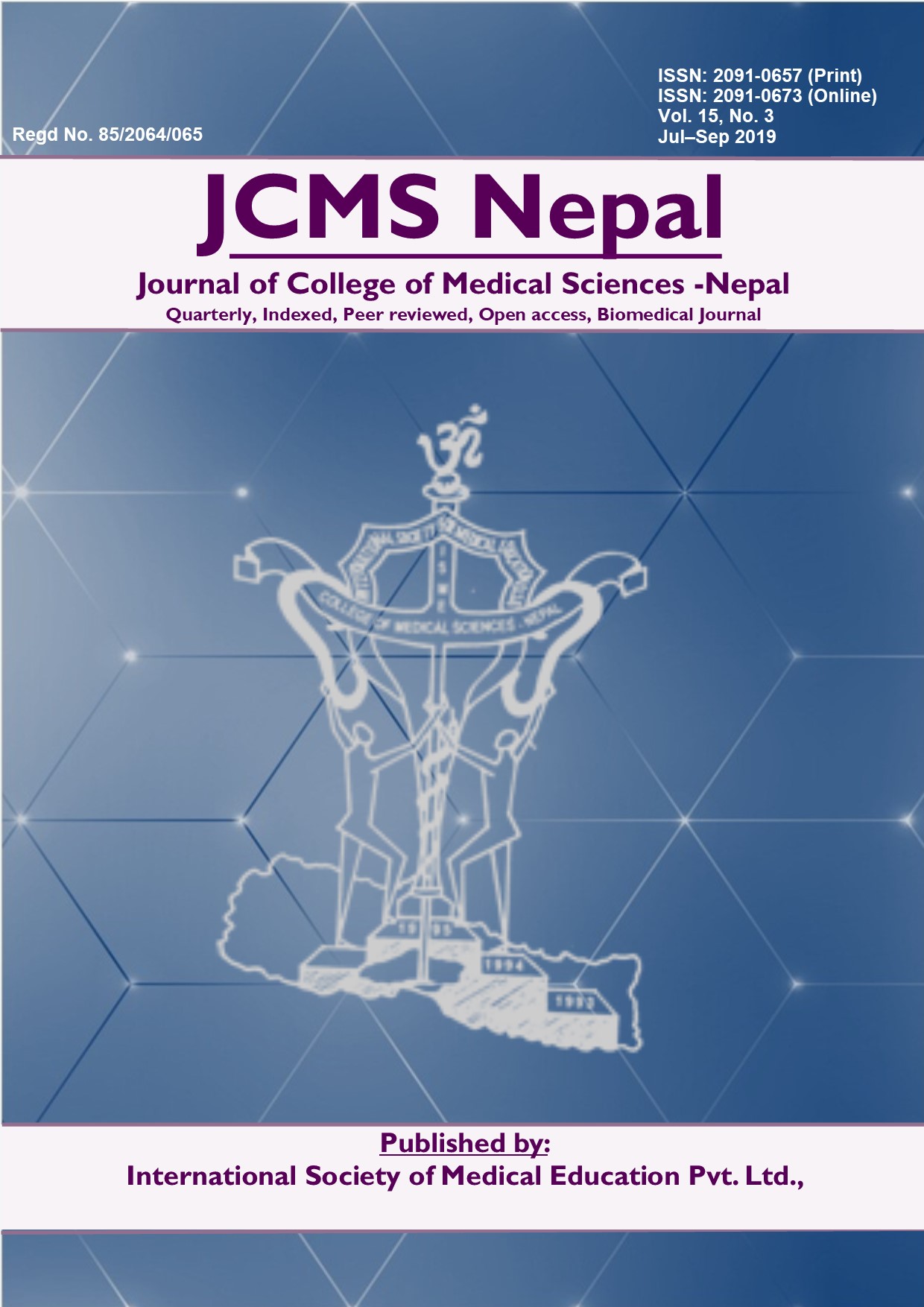Clinical Profile of Severe Cutaneous Drug Eruptions in a Tertiary Care Hospital
DOI:
https://doi.org/10.3126/jcmsn.v15i3.24306Keywords:
adverse cutaneous drug reactions, drug hypersensitivityAbstract
Background: An adverse cutaneous reaction caused by a drug is any undesirable change in the structure or function of the skin, its appendages or mucous membranes and it encompass all adverse events related to drug eruption, regardless of the etiology.
Methods: This is a retrospective descriptive cross-sectional study done fom April 2017 to March 2019 at dermatology department of Kathmandu Medical College Teaching Hospital. Sample size was calculated as 42 with prevalance of severe cutaneous drug eruption as 3%. After the medication history was taken, all suspected causative drugs were discontinued. For the initial 5 to 7 days, all patients were treated with intravenous corticosteroids and oral antihistamines. Follow up after one week, 2 weeks and one month were suggested for assessment of outcomes.
Results: Out of 42 patients, 22 (52.38%) were females and 20 (47.62%) males. Most were in age groups 16-39 & 46-60 counting to 14 (33.33%) in each group. Acute morbilliform eruption was the most common presentation 20 (47.6%) followed by Steven Johnson Syndrome-Toxic Epidermal Necrolysis in 16 (38.1%). The most common offending drug group in this study was antileptics 9 (21.43%), followed by NSAIDs 8 (19.05%), antibiotics 7 (16.67%), allopurinol 4(9.52%%). Patients were discharged after 7 days with tapering dose of oral prednisolone upto 6 weeks for all patients. However, three patients died due to Toxic Epidermal Necrolysis along with comorbid conditions like intracerebral hematoma, COPD with pneumonia.
Conclusion: Adverse cutaneous drug reactions should be recognized early for timely intervention. Previously sensitized patients should be made aware about fatal outcomes, symptoms, cross reactivites as well as over the counter preparations.
Downloads
Downloads
Published
How to Cite
Issue
Section
License
This license enables reusers to copy and distribute the material in any medium or format in unadapted form only, for noncommercial purposes only, and only so long as attribution is given to the creator.




